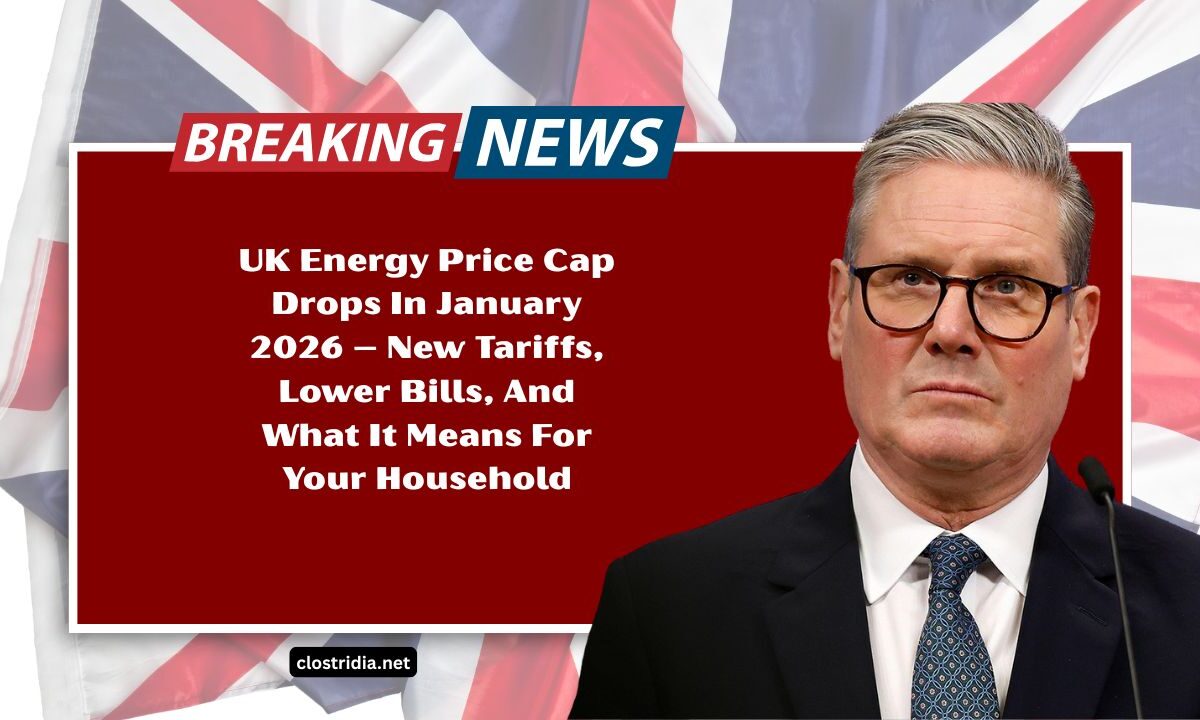Starting January 2026, energy consumers across the UK will experience an important shift as the UK Energy Price Cap Adjustment officially takes effect.
The cap, regulated by Ofgem, sets the maximum rate energy suppliers can charge customers on default or standard variable tariffs.
These changes are designed to mirror fluctuations in wholesale energy markets, offering both challenges and opportunities for households trying to manage rising living costs.
This latest revision comes amid a period of relative market stabilization following two years of price volatility caused by global supply disruptions and inflationary pressures.
The adjustment reflects falling wholesale prices and improved supplier contracts—translating into slightly lower bills for average consumers.
Breakdown of the New Energy Price Cap UK 2026 Rates
The new rates effective from January 2026 show modest reductions in both electricity and gas unit costs. However, standing charges—the fixed daily cost you pay regardless of usage—remain nearly unchanged.
Energy Price Cap Comparison
| Category | Previous Cap (Oct 2025) | New Cap (Jan 2026) |
|---|---|---|
| Electricity (per kWh) | 27.35p | 25.90p |
| Gas (per kWh) | 7.42p | 6.89p |
| Daily Standing Charge (Electricity) | 53.01p | 52.40p |
| Daily Standing Charge (Gas) | 29.11p | 28.85p |
These figures suggest a positive trend in wholesale energy market conditions. Still, standing charges continue to add up, particularly for households with low usage or seasonal consumption patterns.
How the Ofgem Update Affects Household Bills in 2026
Based on typical annual consumption (2,700 kWh of electricity and 11,500 kWh of gas), Ofgem estimates that the average household energy bill will drop to £1,690, compared to £1,834 under the previous cap.
This decrease of £144 annually may seem modest, but it offers meaningful relief for families struggling with high energy bills.
However, households in older properties, or with higher-than-average usage, may not experience the full benefit of the adjustment.
Importantly, this is not a government subsidy. The cap is a pricing control to prevent overcharging, not a guarantee of low rates.
Households are still encouraged to shop around for competitive fixed-rate deals or green tariffs where available.
Energy Price Trends and Household Strategy
The January 2026 energy price cap adjustment coincides with growing household interest in sustainability and energy efficiency.
Homes equipped with smart meters, insulation, energy-efficient appliances, or solar systems may see even bigger savings as unit prices fall.
Additionally, several energy suppliers are introducing dynamic tariffs such as:
- Time-of-use pricing, rewarding off-peak usage
- Green energy incentives, offering lower prices for renewable consumption
- Smart device integration, helping automate energy-saving decisions
These innovations can empower consumers to take control of their bills, especially in a regulatory environment where unit prices and standing charges shift frequently.
Future Considerations for Energy Consumers
Looking ahead, the next Ofgem price cap review is due in April 2026. Given current market dynamics, further changes are possible—especially if geopolitical tensions or environmental policies impact global energy supply chains.
To stay ahead, consumers should:
- Regularly monitor tariff changes and cap updates
- Take advantage of government energy efficiency programs
- Explore smart tariffs and renewable energy partnerships
- Understand their usage patterns to adapt accordingly
With energy bills becoming a major component of household expenses, staying informed and proactive is more important than ever.
The UK Energy Price Cap Adjustment in January 2026 brings slight but valuable reductions in energy costs, with electricity and gas prices both seeing modest drops.
For most UK households, this means better affordability for the winter season. Still, long-term savings depend on usage habits, efficiency upgrades, and proactive energy management.
FAQs
What is the new average energy bill under the January 2026 cap?
The typical household will pay around £1,690 annually, based on standard usage levels defined by Ofgem.
Why didn’t standing charges decrease significantly?
Standing charges cover fixed infrastructure costs, which are less affected by wholesale price fluctuations, so they remain relatively stable.
Is the price cap the same as a fixed tariff?
No. The price cap limits variable tariffs, but fixed tariffs may offer better rates or flexibility depending on your supplier and contract.
